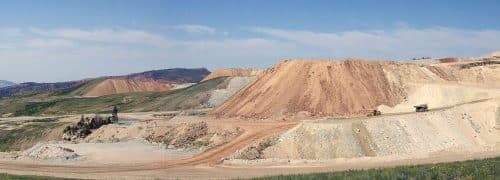Researchers from the Technion and Tel Aviv University present new findings concerning the emission of particles from phosphate mines.

Researchers from the Technion and Tel Aviv University present new findings concerning the emission of particles from phosphate mines. the research, Which was published In the journal Science of the Total Environment, it is based on an analysis of data in three mines in neighboring countries: El Hassa and El Obaid in Jordan and Hanifis in Syria.
Phosphate is an essential substance in agricultural fertilization, in the food industry and in the chemical industries. In Israel alone, about 4 million tons of phosphate are produced every year - about 2% of the global production.
Phosphate mining is an environmental and public issue in Israel and the world due to the particles emitted during mining. Many studies do point to the health damages of exposure to particles emitted from industrial activity in general and addictions in particular - damages including increased mortality from respiratory diseases and heart problems. Hence the importance of estimating as accurately as possible the particle emissions from the mining activity.
The article is signed by three researchers: PhD student Dmitri Tartkovsky, Head of the Center of Excellence for Environmental Exposure and Health at the Technion Prof. David Brodai, and Dr. Eli Stern - Director of the Center for Risk Assessments at Tel Aviv University. According to them, the emissions estimate used today, based on "emission coefficients" published in the United States and later also in Australia, is based on assumptions that were not examined in depth until the present study.
The study found that the existing evaluation methods do not take into account the emissions that occur after mining, in the processing of the lead and in the transportation of the ore on a conveyor belt or on unpaved roads. According to Prof. Brodai, "These emissions may be even more significant than those that occur during mining and quarrying, and it is possible to reduce them with fairly simple steps."
